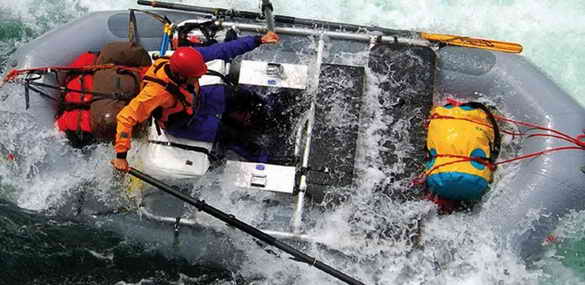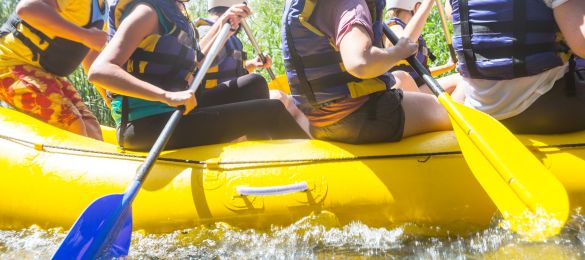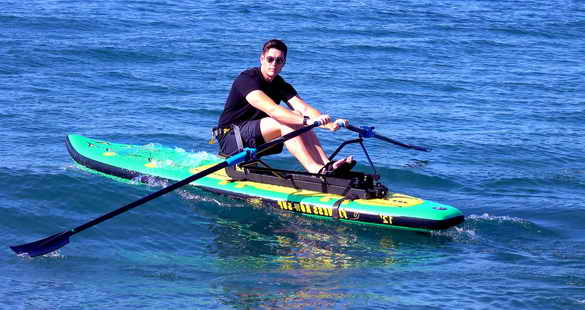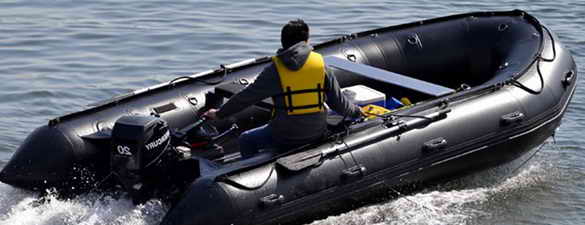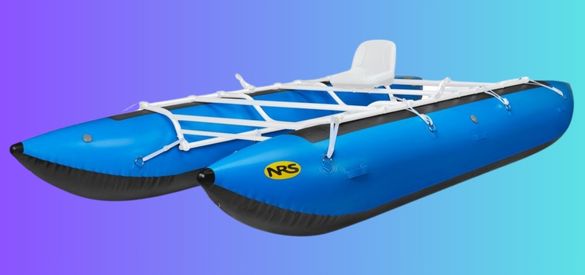Whitewater rafting trips are increasingly popular for many good reasons. Some people are seeking more ways to experience the feeling of seeing nature in its raw, powerful form. Others just want to take in the soothing picturesque scenes or experience the adrenaline rush of battling the rapids and conquering the long intermittent hikes that often follow.
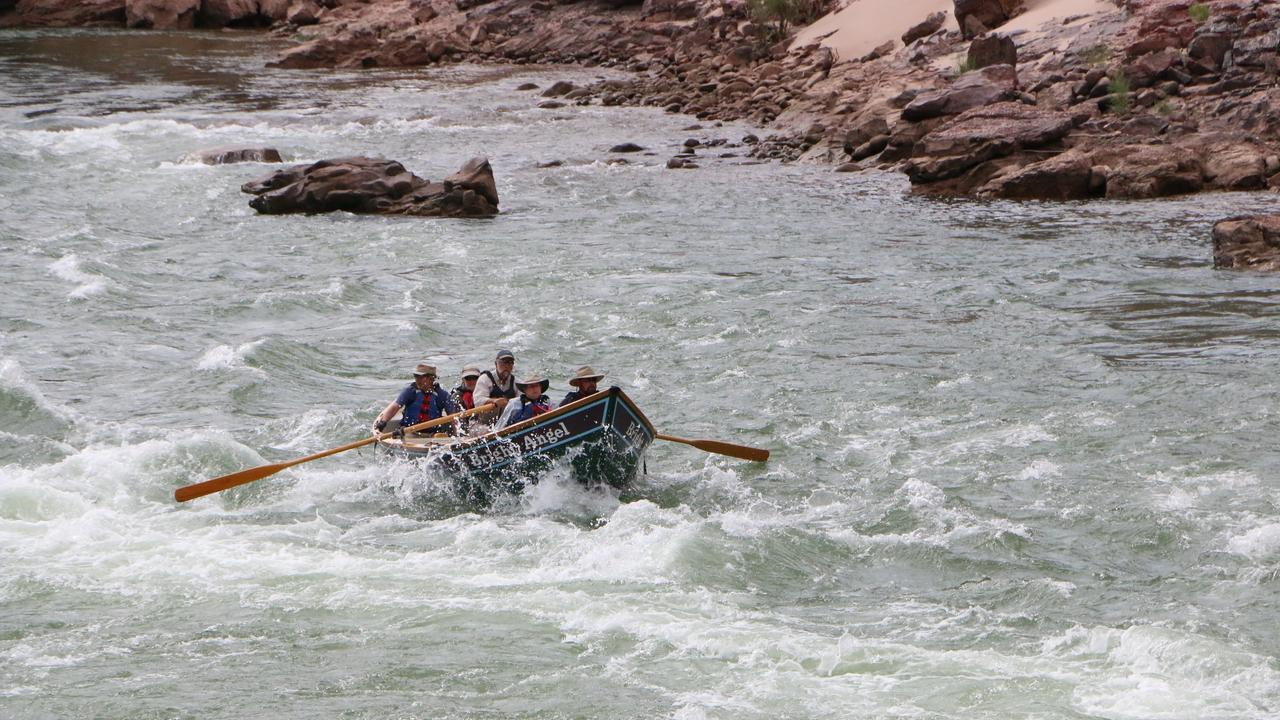
Whatever your reason, there is no doubt that a good rafting trip will be an exciting and refreshing experience. The Grand Canyon is one of the most popular white water rafting choices, and there is a good reason for this. The Grand Canyon offers great rapids that vary in length and intensity. Add to that; it contains stunning views and great natural wonders such as caves, beaches, and canyons where you can easily go for a walk and get lost in nature's majestic excellence.
However, you should note that a Grand Canyon rafting trip is not something to jump into easily or hastily. The entire experience is extremely rigorous and requires weeks of intense planning and training to maximize or enjoy efficiently- a fact many people tend to ignore when they decide on a rafting trip.
Is White Water Rafting Physically Demanding?
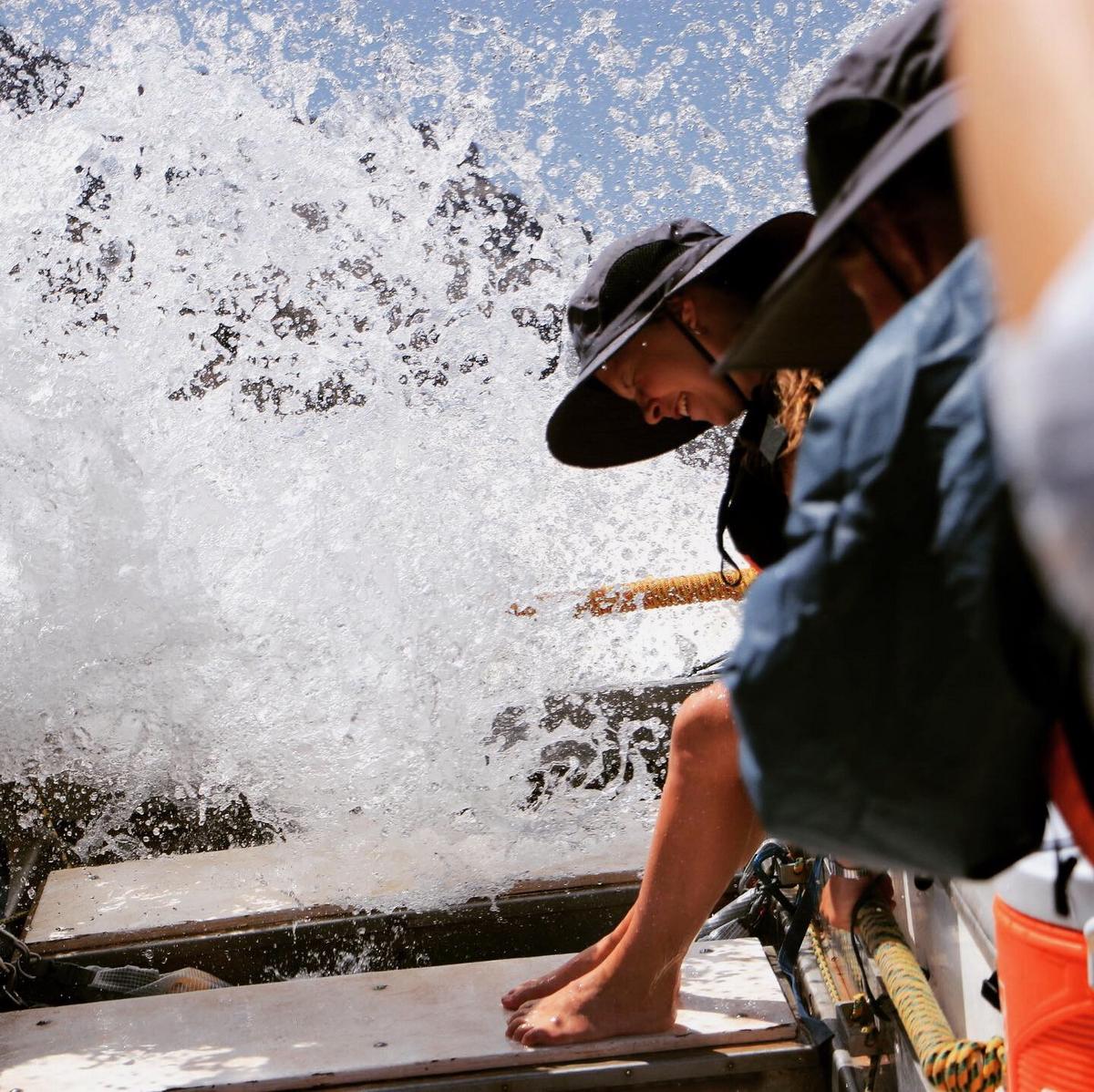
Undoubtedly, rafting trips are exhilarating, but they are physically demanding for a major reason; whitewater rafting requires intense physical activity because of how they are organized, and secondly, all participants must participate. You need no sports experience, but good physical condition is necessary.
Most whitewater rafting trips are multi-day expeditions across remote landscapes and extreme weather conditions that you might not be used to. If your trip is along the Colorado river or the Grand Canyon, you will most likely face more heat than you are used to, as the region is practically a desert. Weather extremes can get some people dehydrated and sun burnt if they do not prepare carefully for this event.
Additionally, many underestimate the effect of continuously moving campsites and spending most of their day in rafts, riding waves of varying speeds. You are bound to experience rapidly swinging temperatures as you move from being wet and cold from soaking in water to being suddenly hot and dry after a moment of calm and exposure to the sun. Then, most people aren't used to adjusting to a moveable toilet or sleeping bag.
Many rafting companies also have a policy of helping to load the raft at the beginning of the day. Additionally, the rigorous bouncing about in a raft can be physically challenging. This exertion is why one of the recommendations of many rafting trip companies is to ensure that you properly train for your trip. If your health condition is affecting your participation, consult with your doctor.
How Difficult is the Grand Canyon Rapids?
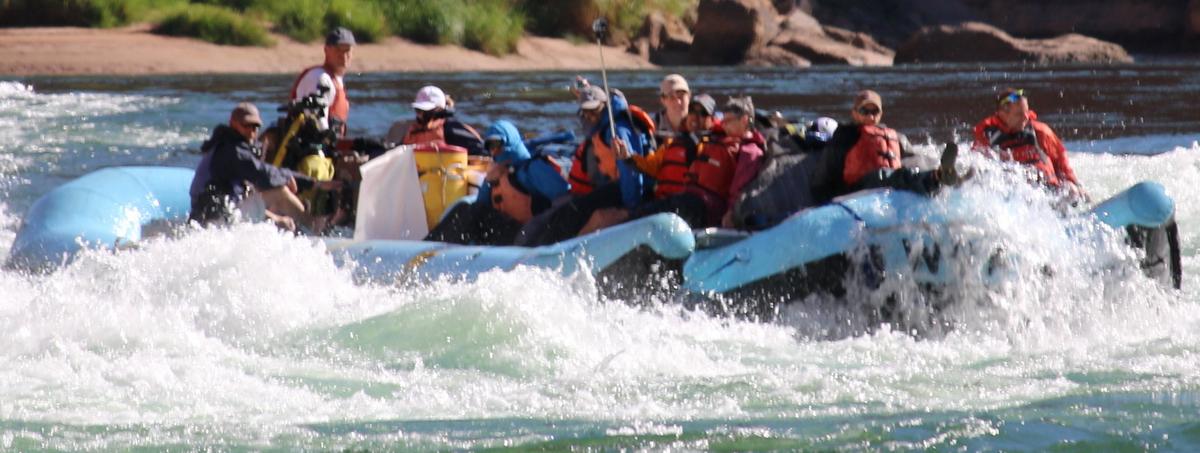
Another thing you will need to consider during whitewater rafting trips is the rapid levels and how you plan to negotiate them. Rapids are sections of the river where the river steeps and cause increased water velocity and turbulence. Most rapids are classified according to their intensity scale from one to six. Rapid classification of one means that about anyone can wade through it without many problems. Rapid classification of six signifies a rapid of great intensity with high danger levels and should only be attempted by experts.
The Grand Canyon rapids are a rare exception using a Rapid scale of zero to ten. The mighty Colorado river is estimated to have at least eighty big water rapids of varying intensity and lengths and a total of one hundred and sixty rapids altogether. Still, no matter what scale you are using, rapid ratings are primarily geared toward the technical skills required to scale them. The lowest number is the easiest, while the highest is the toughest and should only be traveled by expert rafters. The Grand Canyon is a crowded river, and the entire rapid is accessible.
Most rapids have a Rapid classification of six to seven, equivalent to the Rapid standard classification of three. A Class three classification has been by the Grand Canyon national park service has described this rapid classification as physically demanding enough to get the adrenaline flowing but not too challenging for those with limited rafting experience. You can expect larger rapid waves, tight ledges, and other avoidable outcrops. These rapids are tasking and often require a competent tour guide. Although, you want to be careful when negotiating rapids as they can easily tip you or the raft over. But a strong team and experienced raft guides can help you get past these with little or no difficulty.
An ideal Grand Canyon rafting trip suitable for people of all ages, including children, will constitute a couple of class one and class two interspersed with class three rapids. Class one and two rapids usually have very little wave action, with some fast-moving waters at best. They would provide suitable resting moments along the journey to relax before encountering something more demanding. The tour guide can coordinate the group, enforce safety procedures like having your life vests on, and appoint a trip leader. He will also decide on what type of craft the team would use, either a motorized craft or an oar raft, and spend time scouting the river to give the team the best trip possible.
Good rafting companies found through Advantage Grand Canyon often go to great pains to provide the best Grand Canyon trip you can experience. They even have detailed information about the best rapids down, along with sites with natural wonders, amazing waterfalls, and avenues where you can get the necessary materials, such as sleeping bags, to help you have a successful trip. Advantage Grand Canyon can also arrange varying trip lengths across the mighty Colorado river, including a private trip if you desire.
How Hard is Rafting the Grand Canyon?
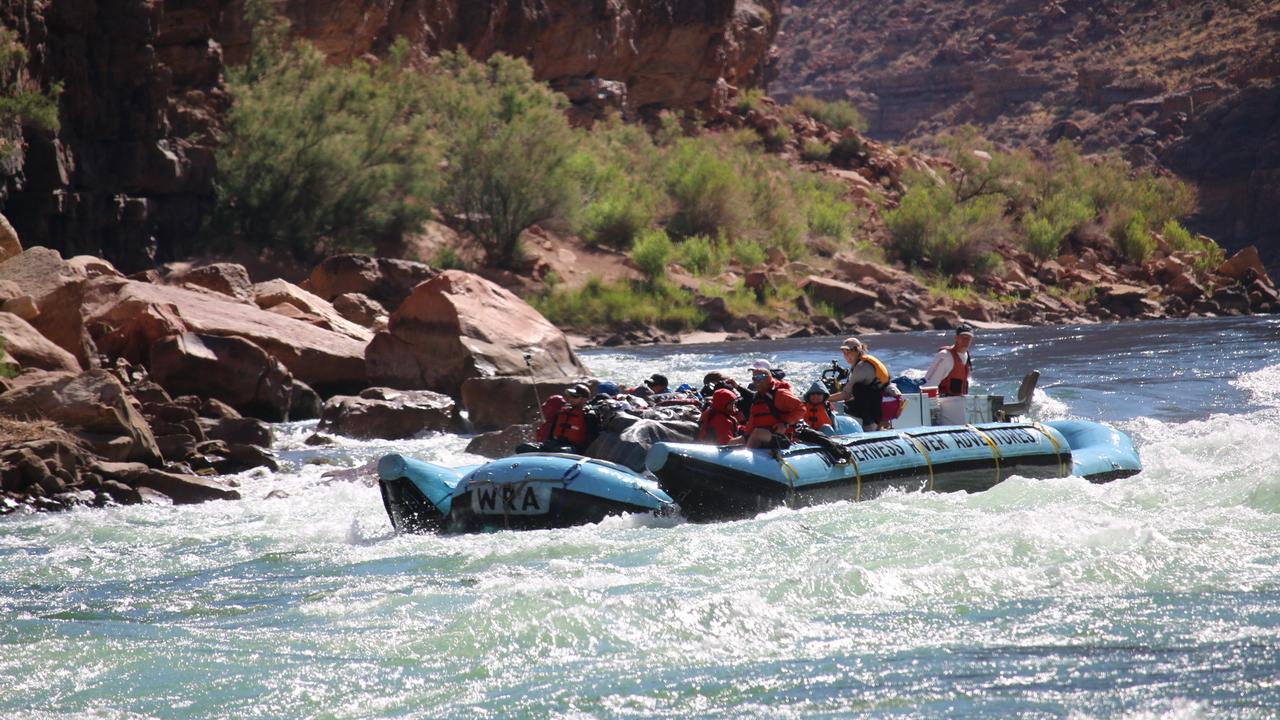
The Grand Canyon rafting trip is one of the most popular whitewater rafting trips you will ever embark on. Each year, many people flock to register for the chance to take a trip down the mighty Colorado River. It is considered a bucket-list trip with many opportunities for an outdoor adventure and other side attractions such as hikes, amazing waterfalls, natural wonders, and a quiet, unique environment where they can truly appreciate the beauty of nature. Records from the National Park Service estimate that approximately twenty-thousand visitors go to the Grand Canyon national park yearly; few are on commercial raft trips.
However, rafting on the Grand Canyon and the Colorado River is also one of the toughest trips you can ever encounter and there are a couple of reasons why this is so.
-
The river has a high-water volume with big waves that are also fast-flowing.
-
Many water rapids require varying degrees of expertise in scaling them, ranging from amateur to expert levels.
-
The temperature of the water, even in the summer, can be a bit of a shock to most people.
-
The remoteness of the area. The Grand Canyon rafting trip has no roads in and out and is practically a desert.
-
Exceedingly hot weather can lead to dehydration, heat stroke, and flash flooding.
In addition, the rafting Grand Canyon trip length requires considerable river expertise. The Colorado River runs through Grand Canyon, with 160 rapids that have a unique difficulty running, so it has an individual rating system.
Fortunately, the difficulties presented by Grand Canyon whitewater rafting trip lengths are what makes them very popular and exciting. Think of it, without these challenges; the trip would not be a proper outdoor adventure now, would it? You would probably want to sign up for something that wouldn't bore you in the process.
Incidentally, several precautions are often set in place by the National Park Service and Rafting companies when embarking on river trips. You can also do your bit to guarantee your safety and enjoy the trip more. Here are some suggestions:
-
Since a whitewater rafting trip is likely to be physically demanding, embark on some physical training before the trip so that you can be fit for the rigors of the journey. Swimming is a crucial skill if you plan to go on a whitewater rafting trip.
-
Always dress for the weather. Rafting trips can happen all year round so you want to take the temperature into consideration. Most trips happen during summer and temperatures can go as high as 100 degrees. A generous sunscreen application and wearing dry suits to stay warm are recommended.
-
Good raft guides will be on hand to give good advice on the best place to set up camp. Listen to their instructions to avoid unnecessary dangers.
-
Do proper research before embarking. Research the sites of big rapids, campsites, trip lengths, hike routes, and missing mileage.
-
Stock up on antibiotics, as you might find yourself needing them before the trip is over.
How has Grand Canyon Rafting Trips Gone in 2022
The Grand Canyon rafting excursion is regarded as among the most popular rafting experiences you could have. The entire trip includes the Colorado River's largest canyons which can take away your breath and offer something new every time that you visit. Interestingly, this is more than just a figure of speech as the Grand Canyon changes constantly and shows its beauty for a reason. Some places may appear narrow in the dark, but many have spectacular falls such as the Deer Creek Falls, which is a beautiful freefall found in the lower canyon. A canyon hiking trip generally spans 188 miles over 60 rapids over 6 to 9 days although hikes vary. The Grand Canyon offers the most exciting thrill, satisfaction, and comfort as you travel through the pristine waters.
The Grand Canyon is a symbol of America and has been so for centuries. As far back as 1919, when the canyon was incorporated into National Parks, hundreds of US households visited the natural wonder. However, these earlier visitors who came to see the canyon mostly overlooked Grand Canyon whitewater rafting activities. It wasn't until recently that white water rafting expeditions began in earnest down the river. Flourishing water, refreshing splashes, flowing rapids, and adrenaline rushes create an epic experience for any kayaker! Rafting trips, however, are a great way to enjoy nature or relax. Today we share the facts urging the people on this list to add Grand Canyon whitewater rafting to their bucket list.
A Quick Guide to Rafting the Grand Canyon
Rafting the Grand Canyon can be an unforgettable outdoor adventure for those who have seen and experienced it, and it could be the same for you. The Colorado River runs two hundred and seventy-nine miles in the canyon and attracts an average of twenty-two thousand visitors annually. On a rafting ride, you get to experience the thrill of multiple big rapids, and amazing scenes including the majestic waterfalls, ancient caves, and the breathtaking natural wonders of the Grand Canyon, like diamond creek, which is the river's biggest tributaries.
As you go down the river, your chances of stopping and hiking in ancestor Puebloan sites and partial canyons will also increase. The Grand Canyon has one of the best hiking trails, with places like bright angel trail making picturesque settings. Hikes vary, and it's possible to begin your trip from the south rim. The canyon is home to many ecosystems, so you will see a lot of flora and fauna as you go on your hike. The elevation varies, too, with the North rim at least 1000 feet higher than the South rim. During the whole adventure, whether you are taking a river trip or hiking, you can enjoy nature's awesomeness, enjoy delicious meals, and possibly connect with yourself during the process.
The Best Hiking Trails in the Grand Canyon
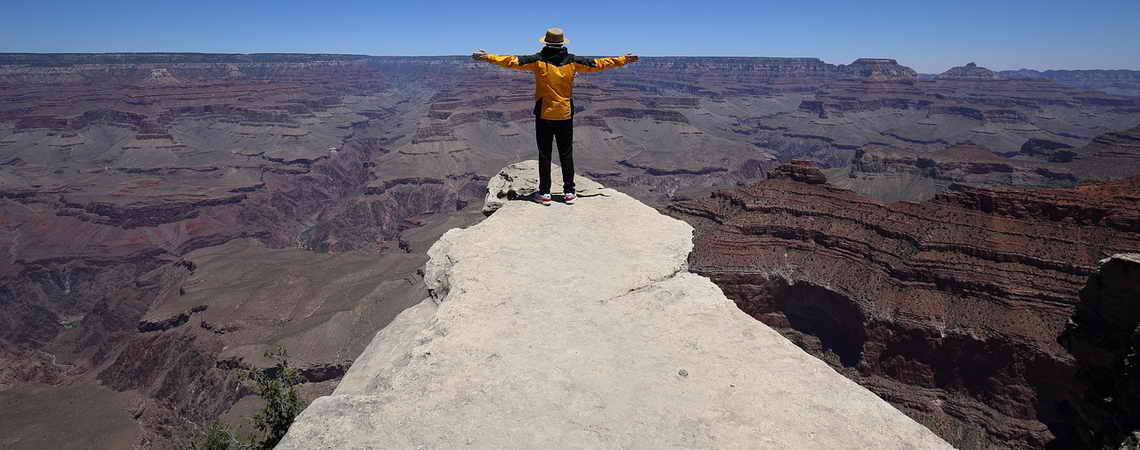
As you know, you can choose to hike along either from the north or southern pass of the canyon. This section briefly discusses the best hiking trails in the North Rim and the South rim.
Bright Angel Trails is the best hiking trail in the south rim and one of the most iconic hiking destinations in the park. This gigantic piece of natural artistry took over two billion years to form and features several water fountains, and caves. It is considered one of the safest trails in the Grand Canyon. It has been further upgraded by National Park Services to include a well-maintained trail, restaurants within stumbling distance of the trailhead, and additional water fou. Nevertheless, bring plenty of water if you plan to walk this trail as it can get very hot and deadly, especially during the summer months.
In the North Rim, you have the Cape Royal Trail, a flat, family-friendly hike offering one of the most sweeping and breathtaking canyon views you would find anywhere in the park. However, the trail is not as visited as other trails, seeing just 10% of the park's visitors. It is a very scenic but long trail and could take at least half a day to complete. NPS has improved the trail so much that it is now a paved trail in the park, so it is now easier to walk and is even wheelchair friendly. However, unlike most paved trails, cape royal does not accommodate dogs although permits have been given for weddings because of the amazing views of the region. Given the beauty of the trail and the ease of crossing it, its low traffic is sometimes shocking to experts. Many speculate that the low traffic could result from its out-of-the-way nature. The trail is considered one of the hidden beauties of the Grand Canyon.
How much does a Grand Canyon Rafting trip cost?
All commercial operators licensed to travel in Grand Canyon National Park must comply with safety and environmental rules and guidelines. Since the National Park Service has only allowed a specific amount of river visits through Grand Canyon a year, the availability of a commercial trip is limited and usually fills about one or two years ahead of time. Trip durations range from $399 for an overnight river cruise for Hualapai River Runners to $6700 for a trip of 17 to 21 days. Transport methods vary from motorboats to boats powered by boats on oars to wooden boats.
Seeking Professional Aid When Going Grand Canyon White Water Rafting
When you decide to raft at the Grand Canyon, you may need to seek a professional boat rental firm. Fortunately, sixteen outfitters provide whitewater rafting excursions. You can find a list of the outfitter's trips on the Advantage Grand Canyon website. The canyon section you're rafting in will differ depending on how long the journey you are interested in is.
What is the Best Time to Hike the Grand Canyon?
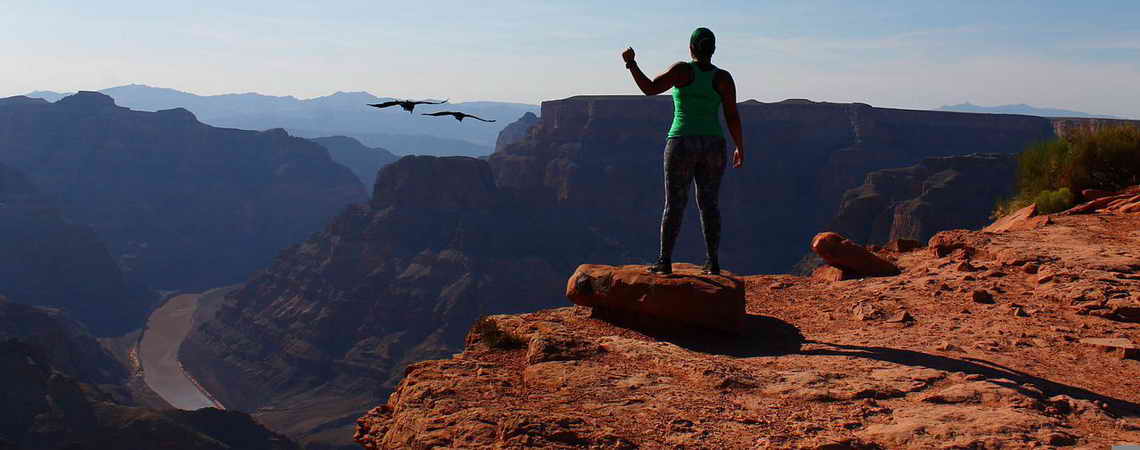
Generally, commercial flights take place from May to October, with peak demand periods in June, July, and August. It's logical because summer is usually when most people are interested in going on a river trip. During the winter, traffic and bookings tend to slump, and the Grand Canyon is always surprisingly cold, contrasting to summer when temperatures often soar above 104°C; you should know that if you travel during summer, you will have a hot summer. You can also take a fall and spring trip with fewer visitors and summer heat.
Choose Your River Section and Trip Length
If you are planning on leaving for longer periods you can choose from various trips from 3 - 16 days, or if you're limited on time, there are half-day trips. The full canyon on the motorboat lets you explore the canyon faster than any other paddle-wheel drive. The upper canyon has more geological and historical sights, whereas the lower canyon has the largest rapids. Some offer helicopter tours from Vegas, so there is no need for hiking.
How hard is Rafting the Grand Canyon?
Rafting the Grand Canyon can be a difficult task. The River in Grand Canyon carries 160 rapids which are extremely unique and generally difficult. Unlike other rivers which utilize I-V Whitewater Rating systems, the Grand Canyon Rapids is rated at 10 points. Generally, these rapid runs are difficult for novice river runners, even when they run smaller rapids. If you've not traveled with anyone with expertise in running high-tech whitewater, you should consider hiring commercial boating companies with experienced guides.
Preparing for your Grand Canyon White Water Rafting Trip
Many days in the desert can be physically challenging, especially for people with little or no physical fitness. This fact is important because there is an incredibly low distance between the environment, and it's practically impossible to access healthcare. Everyone taking this trip must be physically well for travel because temperatures range from extreme to extreme cold, with wind, sun, wind, and water concerns. In addition, hiking is a very difficult nature. Aside from cardio, strength, and flexibility are vital.
How long does it take to raft the entire Grand Canyon?
The total duration for rafting a Grand Canyon can range between 3 and 16 days. The fastest route to travel in the Grand Canyon is a motorboat, which covers the full distance within six to nine days.
Tips Worth Knowing When Going on Colorado River Rafting Trips
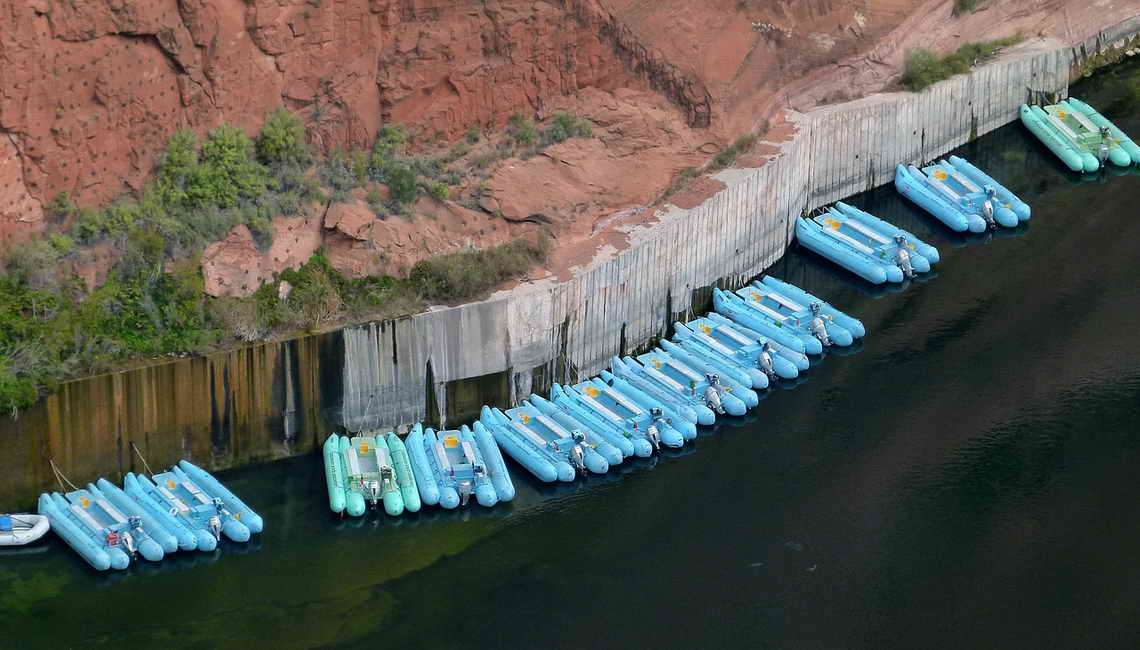
Colorado River rafting trips include high cliffs, a spectacular waterfall, thrilling rapids, and a spectacular beach with a stunning view. White Water Rapids Colorado offers the toughest rapids anywhere in the world. Dedicated outfitters help enrich your experience by sharing their deep knowledge of natural and human history with us. You'll discover each day of your holiday offering something special to you with its adventurous blend of rapids with soft blue water.
Do I need a permit to raft the Grand Canyon?
A permit for guided commercial trips is included, and it's not necessary to get permits. Private raft trips to Canyon National Parks are only possible through a permit issued by the National Park Service on a Lower Section or through the Hualapai. Private groups can obtain permits through park lottery systems. For more info, go to the website to obtain a permit from the National Park Service; the applicant must register with the website and log in.
Booking Your Trip
It is simple to start an outdoor adventure at the Grand Canyon. Most people with an adventure experience and who love the outdoors dream about such an adventure. You probably imagine holding their breath to a river as it bucks and runs in waves after waves of frothed brown water. The thought is idyllic but incredibly challenging for people to achieve their dreams. Don't delay; book your trip through professional outfitters or the National Park Service quickly, so you don't miss the chance to fulfill your dream.
Choose your outfitter
How do I select a suitable outfit for a particular outfit? Firstly, you must decide your trip length. Next, you need to pick what boat you are looking for. A good thing to note when picking your boat is to know the section of the canyon best suited to your needs, as all boats are not fit for all sections of the Grand Canyon. During this time, some excursions are more expensive. Then you will find the outfitting provider that offers you their preferred rafting adventure. Advantage Grand Canyon is a professional aggregator that can cater to all these concerns.
Calculating the Cost of the Grand Canyon Whitewater Rafting Trip
Trip costs vary depending on the duration of the boat type of the year, amenities, and level of food and supplies. The above prices represent a rough estimate but may vary depending on seasons and availability. Ensure you have an honest, detailed conversation with your outfitter before embarking on the journey to avoid being stranded.
Choosing the Best Boat Type for Your Grand Canyon White Water Rafting Trip
There are many raft styles, but not all of them are suitable for different sections of a river trip. Some raft styles are suitable for flat water trips while being unsuitable for rough rapids. Traditionally, inflatable boats are the most commonly used because they are easier to unpack and maneuver when negotiating difficult regions of the Colorado river. However, a few motorized crafts are also used during these trips.
Here are a few of the most commonly used raft boats you can expect to see when you take your whitewater rafting trip.
Oar Rafts
Oar rafts are of the most intimate ways to take a Grand Canyon white water rafting trip. The boat can easily accommodate as many as four people, with the tour guide seated on a cooler side close to the center of the raft. The extensive gear is usually found in a frame surrounding the raft.
However, some of the boat's occupants must take precautions if they intend to be safe. The passengers at the back of the boat must mind how they sit, or they could get easily thrown off while the boat is in transit. The tour guides also have to be careful, so they don't hit those behind them when navigating rocky sections of the river.
Oar rafts are nibble and suitable for low volume runs but are terrible when they encounter big rapids that can easily knock them about due to their lack of mass. If you intend to visit the lower canyon with the highest concentration of class IV rapids, you might want to consider ditching this type of raft boat.
Paddle Raft/Boats
The paddle raft or boat are lmited options in whitewater rafting trips. The most common type of paddle boat is a 14-foot raft with six paddlers and a guide. All paddlers sit beside each other in a uniform formation while the guide sits in the back, issuing commands and steering.
Paddle rafts are ideal for the bigger rapids with classification ratings of III and IV. These types of rafts are stiff, so they fold easily. Their stiffness also makes it easier for those in it to hold their places while the raft pushes through the most treacherous rapids.
Hyrbid trips (Oar/Paddle Combos)
Oar-paddle combos are trips with 4 - 5 oar rafts and 1 paddle boat in a floatilla. A typical oar/paddle combo will contain five occupants with four paddlers and a guide at the back to give the boat more power and stability by directing the steering. Due to the design of the raft, the guide should be the most experienced member of the crew.
Motor Rafts
Motor rafts are motorized crafts that come with their outboard motors and require little to no oaring from their occupants. They are some of the longest rafts you can use on a river trip as they can be as long as 30 feet and can carry twenty people. Motor rafts have two major advantages: because it is a motorized craft, it is not as physically demanding as other inflatable rafts. They are also easy to maneuver and so can efficiently negotiate large rapids. Motor rafts are mostly used on the Colorado river which has a minimal number of rocks and many large rapids.
Cata Rafts
Cata rafts (called catboats) are similar to other rafts but have some key differences. One of the most obvious ones is they have no inflatable floors, which presents some disadvantages. Due to their lack of floor, they are much more difficult to flip in a hole, they are challenging to the rower, and they do not often feel comfortable for passengers. They also get easily pushed down by heavier loads. However, catboats have some advantages to them too. When cat boats move, they move very quickly although as they barely touch the water during the process, it also has the risk of flipping when pushed sideways against a rock. They also draft so much water when bulged down that they can be incredibly stable.
Perhaps, the greatest advantage and use of catboats are that they help ensure downstream safety. Cat boats are often employed to get flipped-over rafts to shore during a trip. And they can do this while still carrying some crew members to safety in the process. Usually, during this scenario, stronger crew members can swim to shore while the more challenged members can ride in the catboat to dry land.
Catboats always work best with far fewer people, with some finding that they are maneuverable when they are on private trips. If you are seeking to go alone, you will find that the catboats are cheaper, move faster, and are more forgiving than other inflatable rafts. With less weight, they can work like a dream.
Whitewater Rafting Beginners Tips
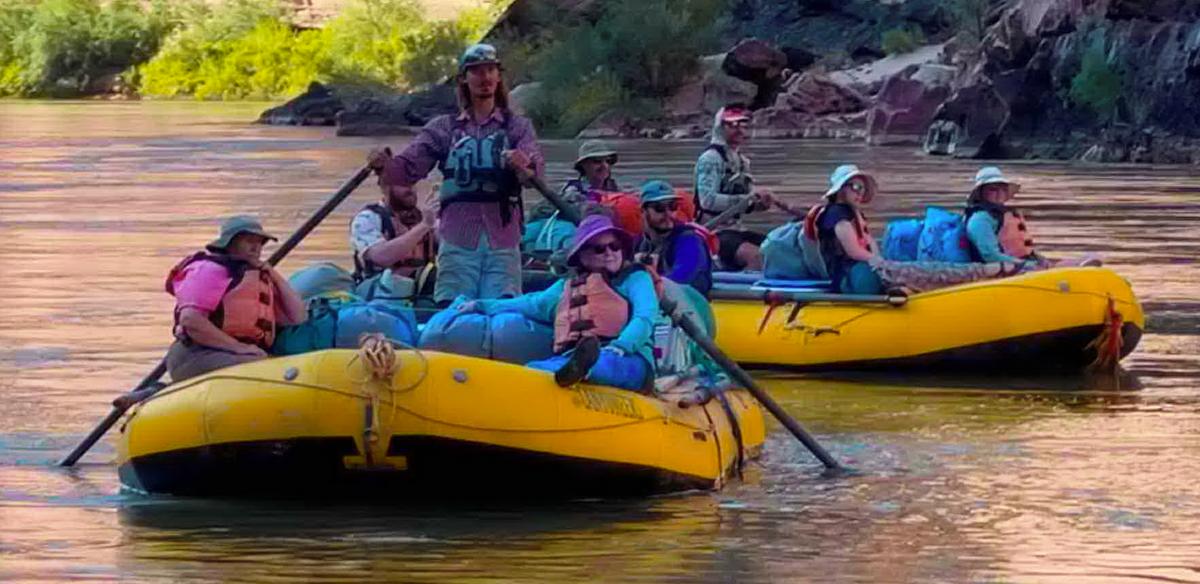
Many people of varying experiences and expertise can still take trips across the Grand Canyon and still find them safe and enjoyable. However, if you are about to embark on your first whitewater trip, you might need the following tips to make your experience safe and enjoyable.
Book Early and Consider Those in Your Group
Rafting spots tend to fill quickly, especially in the peak summer seasons, so you may want to act fast if your intention is rafting. Delaying the move can lead to delays and difficulty getting a guide or your preferred location. However, before you book your trip, speak to other group members to find out if they can handle the kind of trip you have in mind. Trips down the Grand Canyon River can be physically challenging, so you must ensure everyone is on board.
Wear Protective Gear at all times and Learn How to Swim
You will be in the water a lot, and while it is ideal that you already know how to swim, a floatation device and gear will make your time in the water safer. Ensure you strap up carefully, so they don't come off or go above your head during turbulence. The life jacket should also not be too tight that it restricts your breathing.
Trust and Listen to Your Guides
Ideally, you should hire an experienced guide who knows a lot, not just about rapids but also about the Grand Canyon and its River. The only interest of these guides is to guarantee you the best trip possible, so you should always trust them. Good guides will help you organize your rowing team and agree on commands and codes that the team will use during the trip. These commands are important because they can be the difference between a safe trip and your raft flipping over. Careful attention and trusting your guide's instruction are essential for a wonderful experience.
Pick a Professional, Licensed Outfitter
Outfitters are crucial if you are going on your first trip. They provide reliable guides and a lot of information about trip lengths, campsites, and rapids. When hiring one, ask lots of questions and ensure a credible government licenses them. Advantage Grand Canyon is an aggregator who works with licensed outfitters that can provide you with the necessary services to ensure you have a pleasurable trip.
Conclusion
Without a doubt, a whitewater rafting trip is going to be one of the most exhilarating experiences you will possibly have. Thousands of people certainly feel this way and visit the Grand Canyon each year to experience the thrill of rafting and the serene beauty of hiking across some of the canyon's majestic trails. But it also has its own challenges, and it is important that you understand these challenges and adequately plan for them. The first thing to know about a whitewater river trip and the accompanying hikes is that it can be physically challenging for those who choose to partake in it. You will also need to know how to swim and maneuver an inflatable boat, depending on the type of river trip you embark on.
You should also ensure that you carry along everything you need for your physical safety and relative comfort. Always wear a floatation device and a helmet and listen carefully to your guide. Follow instructions concerning team arrangement and orders during the trip, and hire a licensed, capable outfitter through Advantage Grand Canyon to see to those arrangements that will make your stay safe, stress-free, and memorable.









